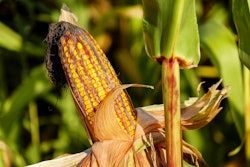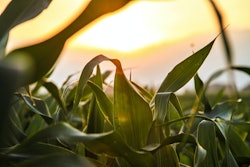
With intensifying drought conditions across the American West, Southwest and Northern Plains, AFBF designed and distributed a survey to assess drought’s impact on farm and ranch businesses. This Market Intel, the first in series of drought-focused articles, summarizes the results of the AFBF survey. Future articles in the series will monitor agricultural conditions in the regions and spotlight state-specific hardships faced by farm and ranch families.
According to the July 22 release of the National Drought Mitigation Center’s U.S. Drought Monitor, nearly 80% of the West plus North and South Dakota are categorized as D2 (severe drought) or higher. This is an increase from 68.5% the week of June 17 and a big jump from the 22% of the West designated as D2 or higher during the third week of July last year.
Over 90% of the land area in Arizona (95%), California (95%), North Dakota (97%), Nevada (95%) and Utah (100%) qualify at or above the D2 level.
The 11 states in the Western region, plus the Dakotas, are vital to the U.S. agricultural sector, supporting one-third, or $112 billion, of total U.S. agricultural production by value. This includes 28% of cattle and cows responsible (in total) for 18% of U.S. agricultural production by value; 40% of dairy production responsible (in total) for 11% of U.S. agricultural production by value; and over 70% of vegetables, fruits and tree nut production by value. Continued drought conditions put production of these commodities at risk, along with the stability of farms and ranches reliant on their crops and livestock for income.
To further quantify some ground-level drought impacts, AFBF’s Assessing Western Drought Conditions Survey was distributed between June 10 and June 25 to state and county Farm Bureau leaders, staff and farmer and rancher members in the affected states. The survey includes several demographic questions to distinguish state and county affiliation followed by three separate sections: Crop Specific Factors, Livestock Specific Factors, and General Water Access.
Each section consists of a set of issues farmers and ranchers may be facing as a result of persistent drought conditions (i.e., selling off portions of the flock/herd or reduction in planted acreage). On a scale of 0 (not at all prevalent) to 5 (extremely prevalent), respondents were asked to select how prevalent each issue was in their state based on their own experience or outreach with members. Each section also includes a dedicated area for further commentary.
The survey closed with 678 responses from 12 states in the West+ region plus Hawaii. It is important to note, states were given the option to distribute the survey directly to members or fill out the survey on behalf of their members at the county, district or state level. This means some states provided very large numbers of responses while others submitted only a few. Figure 2 summarizes both weighted and unweighted results at the national level.
On average, states scored selling off portions of the herd/flock, increases in local feed costs linked to drought, and traveling long distances to acquire feed and forage as prevalent or higher.
Notably, the selected drought-related issues are directly linked to the profitability of a farm or ranch. Numerous herd/flock sell-offs flood local auctions with young animals, increasing supply and crashing local prices. One respondent stated, “The price received for cow/calf pairs at the local auction is so low it’s like giving the animals away.”
Many respondents spoke of weaning animals earlier, reducing grazing time on rangeland, hauling water through mountain terrain and relocating herds across state lines. High feed costs attributed to abysmal precipitation levels further reduces achievable margins on livestock.
A California rancher further explained, “We have had to reduce our herd by 66% to deal with the lack of feed- traveling out of state to try to buy feed – huge transportation costs.”
“All ranchers we surveyed had either begun to liquidate or are planning to liquidate significant portions of their herd. What is especially difficult in Coconino County has been covering the costs of water hauling, thanks to rugged terrain and water that can cost anywhere from one to 10 cents per gallon. And the cost of water does not include the cost of fuel, vehicle maintenance and labor to actually get the water where it needs to go. One rancher alone reported hauling 240,000 gallons of water in this calendar year alone.” -- Arizona Farm Bureau
On the crop side, reduction of planted acreage and switching planned planted crops because of drought scored as moderately prevalent or higher. Increased tilling under crops was the least prevalent issue- though state-by-state results varied, with Nevada reporting tilling under as very prevalent and New Mexico scoring at near zero. Several participants reported current and expected yields down by over 75% of their normal crop, with examples of drilled forage grass failing to germinate, alfalfa ceasing growth after a measly 4 inches, and plants being completely dried out from low humidity levels. Many producers of orchard trees have experienced frequent die offs, with one respondent reporting, “Because of shortfalls in expected water deliveries from state and federal water projects, some farmers have bulldozed almond trees, others have pruned trees substantially others have stripped fruit to save the trees.”
Even with the stark conditions, many producers have relied on good ol’ American ingenuity, transitioning acreage to more drought-resistant crop varieties such as Sudan grass, dry beans and rye. As one farmer described, “I am trying a new crop that is supposed to be more water effective and high tonnage - a product for biofuel research.” Unfortunately, permanent crop types such as those grown on trees and vines cannot be so easily swapped between planting seasons.
The general water access issue of reduced surface water deliveries was scored near the very prevalent threshold, with increases of groundwater use rated near prevalent. State variations for both general water access issues were more extreme than in the crops or livestock sections. Figure 3 illustrates the state-by-state scores for those general water access factors.
Survey participants were clear to point out the diversity in water source points. Many rely on groundwater stored in aquifers, some on local rivers and streams, and other on snow runoff from nearby mountain ranges – all greatly affected by drought. Drilling of new wells is expensive and does not always guarantee improved water accessibility.
One participant explained, “We started pumping well water in mid-April whereas on a normal year we would start in mid-July.”
Another said, “The reservoir we use for storage of irrigation water is at 58% of normal, which means 58% of forage grown for livestock use.”
Many farmers and ranchers are nervous about future local water use policies that could favor commercial and residential use over agricultural use, putting local farm businesses at risk.
“I am trucking water to pastures because the ponds and creeks are dry and ground water is down. I am doing this in places I have never had to truck water before -- since 1942 when my dad bought the ranch.” -- Utah Farm Bureau Member
Conclusion
Farmers and ranchers across the West continue to battle severe drought conditions. The ability to illustrate the severity of these conditions and their impact on agriculture with existing data is greatly limited. AFBF’s Assessing Western Drought Conditions survey results offer a window into operational-level hurdles farmers and ranchers face in coping with persisting water shortages.
Most of these issues and adjustments negatively impact business income, putting the solvency of many farms and ranches at risk. Given the West’s vital role in providing a third of agricultural production by value, ensuring effective drought mitigation objectives are discussed and enacted are of upmost relevance to a secure domestic food supply and protecting our farm and ranch families.
Contact:
Daniel Munch, Associate Economist
(202) 406-3669
[email protected]








